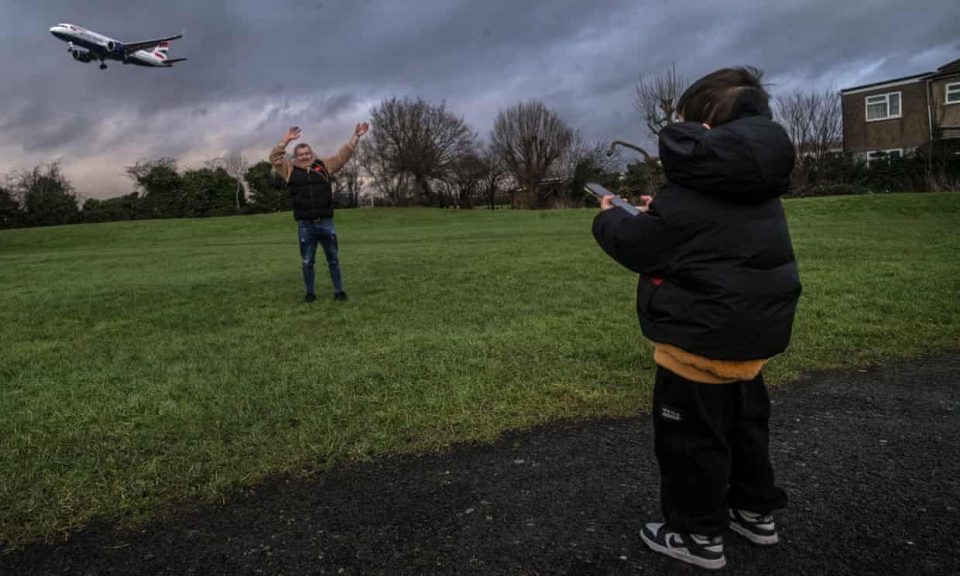The construction of a third runway at Heathrow Airport, a project that has received support from Chancellor Rachel Reeves, would result in increased carbon emissions contributing to climate change, more residents experiencing noise from airplanes, and likely a rise in air pollution.
Despite persistent advocacy for this expansion, there is currently no viable proposal available for environmental impact assessment. However, the previous plan was thoroughly evaluated by the Airports Commission (AC) in 2017 and its findings are still significant today.
The most critical consequence of this expansion would be the increase in CO2 emissions, which are exacerbating the ongoing climate crisis and fueling extreme weather events globally. The Airports Commission projected that the proposed third runway would generate an additional 4.4 million tonnes of CO2 annually.
Since that assessment, the primary development has been the early-stage advancement of sustainable aviation fuels (SAF). The government aims for only 10% of jet fuel to be sustainable by 2030, a target deemed ambitious by its advisors, the Climate Change Committee (CCC).
According to the CCC, the UK needs to reduce overall emissions by 63% by 2035 compared to 2019 levels. However, there is consensus among analysts that establishing a SAF supply chain to significantly replace existing jet fuel demands, particularly with an expansion in flights, will be a slow and challenging process. Producing SAF from renewable electricity is costly, and the availability of the waste fats used in its production is limited. The government projects that SAF will only achieve a reduction of 6.3 million tonnes in emissions by 2040.
While small electric planes capable of short trips currently exist, it will be many years, if ever, before large long-haul flights can be fully powered by batteries. Although aircraft are growing more fuel-efficient, the improvements are minor compared to the surge in traffic a third runway would create.
Crucially, the CCC has asserted that airport expansion contradicts the UK’s legally mandated targets: “no airport expansions should proceed” until a comprehensive management system is developed to ensure any increase in flights is offset by a decrease in aviation emissions. As of now, no such system is in place.
A recent report from the New Economics Foundation also indicates that any carbon reductions achieved through Labour’s plan to decarbonize the electricity network by 2030 could be negated within five years if the third runway and similar expansions at Gatwick and Luton proceed.
Noise pollution is already a significant challenge, as Heathrow is the busiest airport in the UK. The Airports Commission reported that a third runway could expose an additional 12,000 to 28,000 individuals to noise levels exceeding 70 decibels. The Aviation Environment Federation (AEF) stated that this expansion would introduce airplane traffic overhead for the first time to 300,000 people.
Currently capped at 480,000 flights annually, Heathrow could increase that number to 720,000 with the addition of a third runway, averaging almost 2,000 flights each day. Although newer aircraft generate less noise, the dramatic rise in flight numbers and the population affected would overshadow these improvements.
The construction of the third runway also poses significant threats to the local environment, including the demolition of 800 homes, the rerouting of five rivers, and the construction of a tunnel beneath the M25 motorway, according to the AEF.
Air pollution has long been an issue at Heathrow, stemming not only from aircraft and airport operations but also due to its location near the busy M25 and M4 highways. Since August 2023, Heathrow has been part of London’s ultra-low emissions zone, requiring heavily polluting vehicles to pay for airport access, which should reduce air pollution. However, increasing annual passenger numbers from 80 million to 140 million—an increase proposed alongside a third runway—would likely exacerbate air quality issues, contingent upon how many travelers can be encouraged to use trains or the tube to reach the airport.
The Airports Commission, however, was less concerned about air quality, considering it a minor issue for expansion. They suggested that measures like providing electrical power to aircraft at the terminal could alleviate some concerns. Still, a recent study identified Heathrow as one of the worst European airports for exposing people to ultra-fine particulate pollution.
Tim Johnson, director of the AEF, remarked, “Constructing a third runway at Heathrow would represent one of the most environmentally damaging projects the country has ever contemplated. Adding a third runway at the UK’s largest carbon emitter undermines our climate objectives.”
Chancellor Reeves mentioned that circumstances have evolved since 2018, yet Jill Johnson emphasized that little has changed regarding noise abatement, while innovations in cleaner technologies and fuels remain untested on a large scale.
Shaun Spiers, executive director at Green Alliance, asserted, “Moving forward with expanded airports and new roadways clearly contradicts the UK’s climate commitments.”


